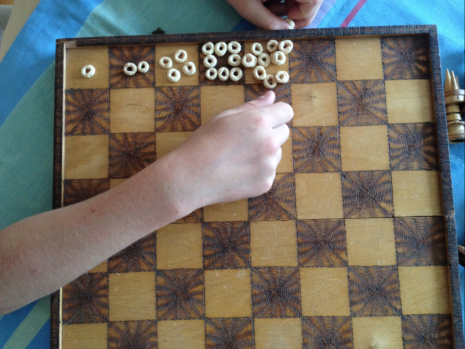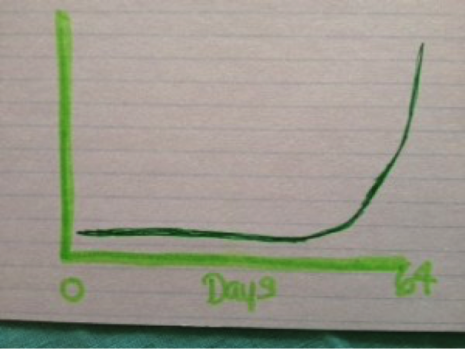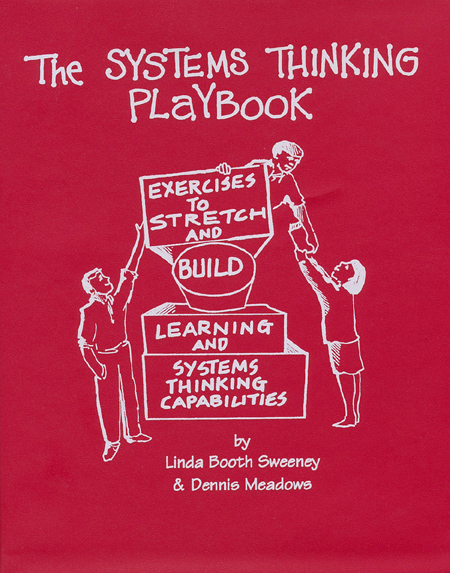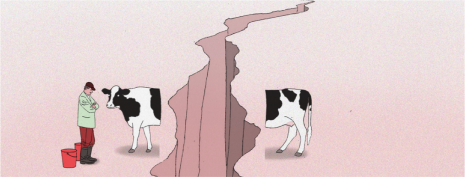Talking to Kids About Exponential Growth During COVID-19
When kids ask, “Why do I need to wear a mask?” it’s helpful to have a good understanding of exponential growth. Here are a few ideas for ways to unpack this powerful force.
Start by reading What does exponential growth mean in the context of covid-19?, a short article in the Washington Post. Then grab a chessboard (or draw the same number of squares on a large piece of paper). Get some cheerios, jelly beans or something desirable and small.

Look at the graph in the article. Why does it look like a hockey stick?
To make it real, put one Cheerio on the chessboard and say: “Pretend these are jelly beans. You win a bet and as your prize, I have to pay you one jelly bean on the first day. For the next 63 days, I give you double the jelly beans I gave you the day. Sounds like a good deal? There’s only one requirement: you have to agree to eat the jelly beans you get each day. Deal?”
Who wouldn’t accept that deal? (Turns out, it’s not a good deal).
“On the first day, you get one jelly bean, the second day you get two and on the third day you get four. Then ask your kids to fill in the rest. “On the fourth day I get eight jelly beans and on the fifth I get 16 and then I get 32!”
Things are looking good. The squares are too small and the Cheerios are too big so you’ll need to pull out a piece of paper and calculate that on the 10th day though, he or she will have 512 jelly beans to eat. Are they phased yet?
Double that number on the 11th day. That would be 1,024 jelly beans.
By the 20th day, the number is over 500,000 jelly beans. On the last day, the 64th day, he would have 18,446,744,073,709,551,616 jelly beans.
Draw a simple graph like this:

Talk about how sneaky doubling can be. And how once it gets going, it can be unstoppable. Think of other examples together. If you are talking to teens, they may know examples of a small party that spiralled out of control (true story here) Another simple example is compound interest. Take two sticky notes. On one write “Money in the bank” on the other write: “Interest”. Say: If you leave your money in the bank (draw a link to interest), you received interest on that amount. The more money in your bank account, the more interest you accrue, (draw a link from interest to money in the bank) the more money in your bank account.
If you leave your money in the bank, you are leveraging a simple closed loop of cause-and-effect known as compound interest, one Albert Einstein once may have called, “the most powerful force in the universe.”
Now, go back to the question: Why do I need to wear a mask? Staying home. Not visiting friends. Your behaviour multiplied by a lot of kids doing the right thing, can help “flatten” an exponential growth curve. Perhaps this is the simple lesson: Our individual actions can combine to have positive or devastating impact on the whole.
Here are some other great resources for talking with kids about exponential growth:
Stories:
Stories are a great way to learn about anything, even exponential growth. Here’s a system-based review I wrote about One Grain of Rice by Demi (good for young and old) for the Waters Foundation.
For a similar story, try “Sissa and the Troublesome Trifles. See I. G. Edmonds, Trickster Tales (Philadelphia: J. P. Lippincott Co.,1966) pp. 5-13.
Games:
For a classic, hands-on example of underestimating the power of exponential growth see the Paper Fold game in the Systems Thinking Playbook and John Sterman’s original version below.


The Infection Game
See The Shape of Change and the Shape of Change Stocks and Flows, by Rob Quaden, Alan Ticotsky and Debra Lyneis, illustrated by Nathan Walker. This paper-and-pencil game simulates the spread of an epidemic. Best when played by a larger number of students – 35 is ideal.
Movies/YouTube:
This youtube clip by Dr. Albert Bartlett of U Colorado is worth every minute, more for teens and adults.
There are also some wonderfully clear examples of exponential growth on the Khan Academy site that explore compound interest and bacteria.
Websites/Blogs: Search “exponential growth” on the Water’s Center for Systems Thinking and Creative Learning Exchange websites. Lots of great curriculum ideas.
Really good explanations, visuals and video clips on these two blogs:
Zimblog: Understanding Exponential Growth
Growth Busters: check out the documentary film and the blog





